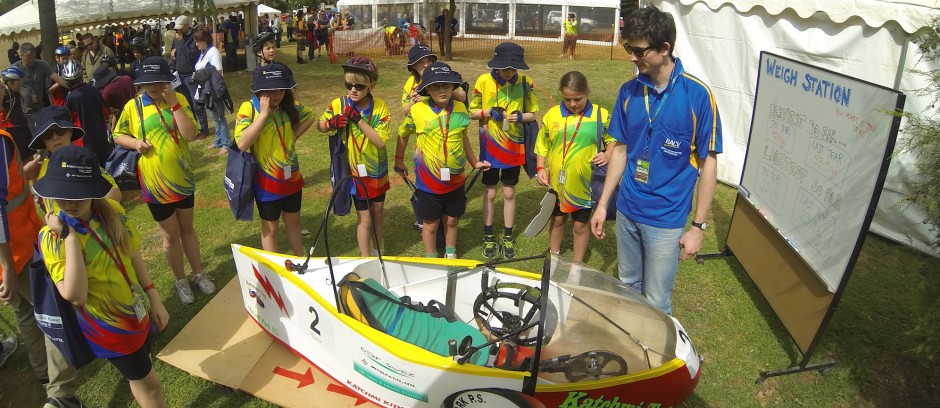
The 2013 RACV Energy breakthrough saw the team consisting of Gerard Delarue and Emily Westmoreland take the challenge to yet again weigh every HPV to compete in the breakthrough. The idea was put to the table in 2013 in the hope that by weighing the vehicles, teams will obtain an appreciation and understanding of the importance of weight saving in endurance racing.
Summary
All 233 vehicles competing throughout the weekend in both primary and secondary sections and managed to weighed a total of 7620 kg.
The average weight this year was 32.7kg across all vehicles; sadly this is up from last year’s average of 32.6kg.
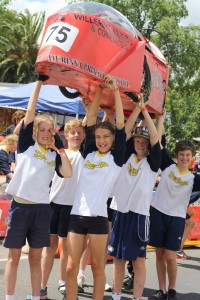 |
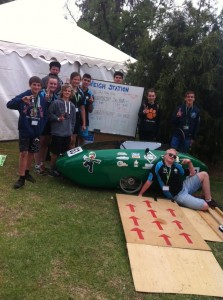 |
LightestTeam ’75’ – Nitro from Derinya Primary School |
HeaviestTeam ’63’ – Luigi from Chaffey College |
Including all vehicles, the lightest was Nitro from Derinya Primary School that weighed in at 22.1kg with the heaviest being Luigi from Chaffey College that weighed in at 53.5kg.
Among the secondary students the average was slightly heavier at 33.2 kg, this is most probably due to the larger size of the riders requiring larger vehicles. The lightest vehicle on the RACV track was Greenlight from Carey Baptist Grammar that weighed in at 24.3kg.
Why lighter?
Basic physics is the reason why teams should aim for a lighter vehicle. In essence, Force = Mass x Acceleration
Greater mass = greater force = more effort and energy required to move the vehicle. Further, a heavier vehicle is also less safe in a crash as it has more kinetic energy and thus has the potential to do more damage to the vehicle and other riders than a lighter vehicle would. Simply, a lighter vehicle is easier to pedal.
However, there are other considerations required besides weight; safety is paramount and so is aerodynamics. The ultimate race vehicle is one that effectively balances all three of these factors to create a light, safe and aerodynamic vehicle. There is no point in having the lightest core-flute head-out construction when it isn’t safe and is always pushing against the wind.
What we noticed when weighing
Since last years weigh in, a lot of people have chosen to remove their decorative lighting, radios and cute, but unnecessary plush toys. This is fantastic as it saves weight easily, BUT there is always room for improvement.
For example: chain guards are a great way to save weight as they can still be safe and effective with many holes drilled into them. While this may only save a few grams, it all adds up and is what they call in the motor racing industry the ‘one-percenters’.
The same goes to excessive padding. Consider the weight of booster seats and padding before using them and really see where the padding is not being used. Overhanging padding is carried around the track for every lap at no benefit of the rider.
What we recommend to loose weight
Less tape. Less paint. Less padding.
- One team sanded back their old paint before putting on a new coat and claimed to have lost 2-3kg.
- We also suggest teams remove any old tape before putting on new tape and be very frugal with the tape.
- Make sure all electronic wiring is as short as possible and none is coiled up. Cutting Speedo wires and shortening them is easy to do with a soldering iron.
- Another great way to save weight during the day is to only ride with your battery during the night. This means your day riders are not carrying a battery they are not using. This can be aided by having a battery that is easily removed.
- If you are using core-flute and it doesn’t need to be structural then consider using 3mm instead of 5mm. We noticed a lot of hair guards made of 5mm core-flute where 3mm or a ‘tape curtain’ would have sufficed and been much lighter.
In Conclusion
As part of our analysis we created a histogram. This is a graph that shows a distribution of each weight point with the higher columns having more vehicles at that weight than the shorter columns. Ask your maths or science teacher for a further explanation.
Overall the distribution of weights was positively skewed (See Fig. 1 Histogram). This means that the vehicle weights clustered towards the lighter end and petered out towards the heavier end of the scale. This is a great shape to have in a distribution as it shows that constructors are pushing the envelope of the lightest race vehicle. If they were not the distribution would be negatively skewed and there would only be a few lighter vehicles.
We are eternally optimistic that the weight of the vehicles can continue to be lowered while still maintaining safety and aerodynamics. This race is not only about promotion of alternative transport methods but also innovation in materials and construction. Keep up the good work and try and surprise us next year.
Downloads
Download > 2013 – Weight Results Listing
Download > 2013 – Summary Sheet

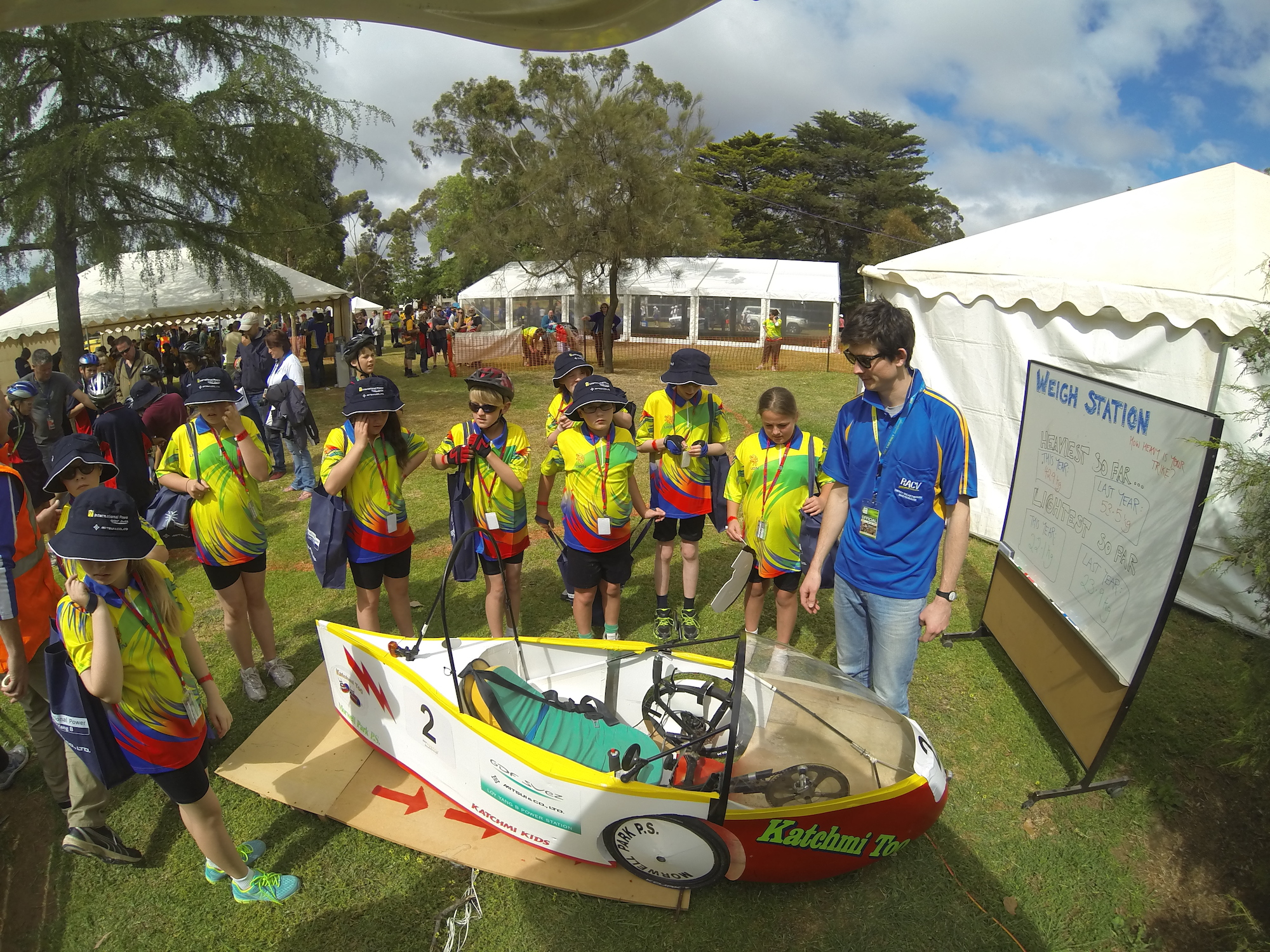
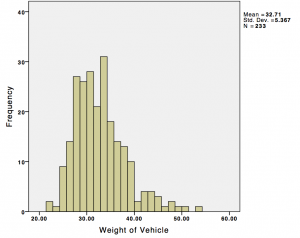



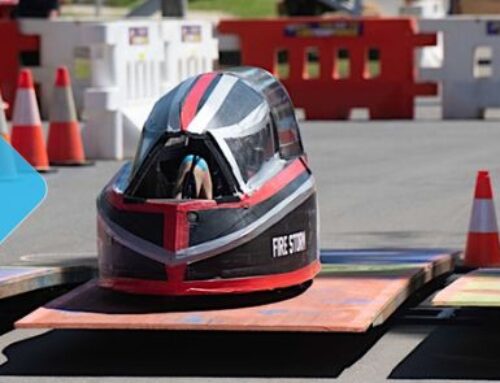
A very well written article. Think about what road cyclists sacrifice to save weight. Even your water bottle needs consideration. I litre = 1 kilogram. Do you really need a a sip of water to survive a 40 minutes stint? Talk to an ocean swimmer or runner. Water bottles are like safety blankets. Take a sip when feeling ‘low’. but scientifically what difference does it make? Hydrate before and after riding (preferably after, before-hand makes you heavier!), not during.
The most important part, and the heaviest, wasn’t included in the survey and that is the person who is driving the machine. It is the total weight of the vehicle that is important.